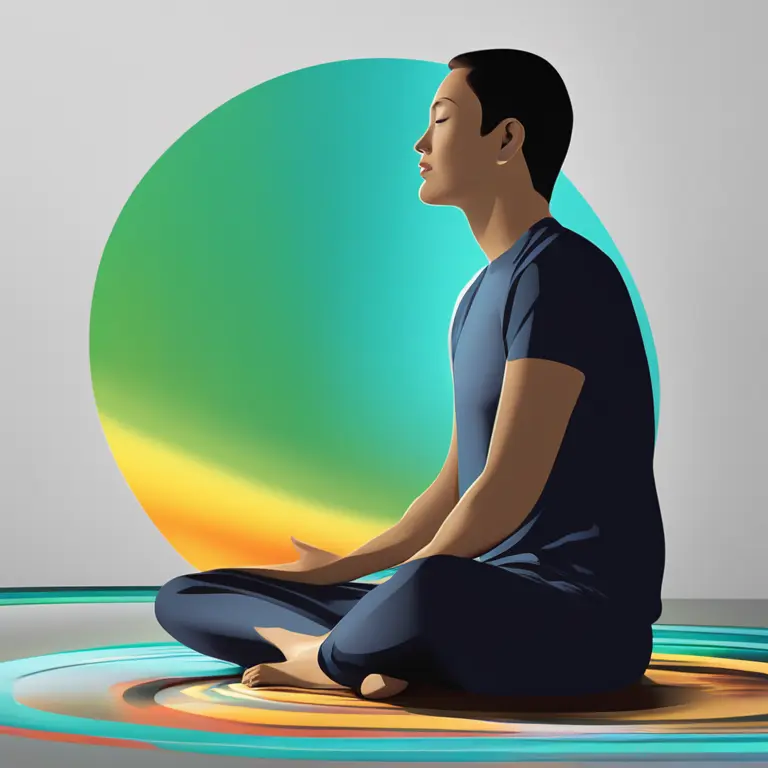
Guiding Steps for Mindful Meditation Practice
Learn the art of leading mindfulness meditation with practical steps that enhance focus, clarity, and inner peace in this comprehensive guide.
article by Hina Kurosawa
Introduction to Mindfulness Meditation
Meditation has been a cornerstone practice in various cultures for centuries, but the focus on mindfulness meditation has gained significant traction in recent years. The essence of mindfulness meditation is the practice of being intensely aware and present in the moment, without judgment or distraction. As we continue to face a rapidly changing world in 2024, mindfulness meditation serves as a counterbalance to the stressors of everyday life, providing a tool to reduce anxiety, improve focus, and cultivate a sense of peace. This article will guide you through the steps to lead a mindfulness meditation session, whether for yourself or for a group.

Creating the Right Environment
To begin, set up your meditation space to promote a sense of tranquility and focus. Choose a quiet room or area free from distractions. Soft, natural lighting can help create a calming environment. Consider the temperature of the room and have comfortable seating or cushions available for participants. The setting doesn't need to be elaborate; simplicity often works best to minimize distractions and help focus the mind.

Starting the Meditation Session
As you start the session, encourage participants to sit in a comfortable position, either on a cushion or chair, with their back straight but not rigid. The hands can rest gently on their laps. It's important to explain that there's no right or wrong way to experience meditation, and that it's natural for the mind to wander. The goal is to bring gentle attention back to the present whenever distractions arise.

Guiding the Breath Awareness
Breath is the cornerstone of mindfulness meditation. Instruct participants to notice their breath, feeling the natural inhalation and exhalation without attempting to control it. Encourage them to feel the sensation of the breath as it enters and exits through their nostrils, the rise and fall of their chest or abdomen, and any other sensations they observe. This focused awareness on the breath serves as an anchor to the present moment.
Embracing the Present Moment
During meditation, guide participants to fully inhabit the present moment. Explain that mindfulness is about experiencing the 'now', without reflecting on the past or anticipating the future. If thoughts come, they should acknowledge them without judgment and gently redirect their focus back to the breath or a chosen object of meditation—a sound, a word, or a visual object in their environment.
Incorporating Mindful Awareness
As the leader, integrate mindful awareness throughout the session. Offer prompts to guide participants toward attentiveness of their senses—what they hear, smell, or feel. Remind them gently to come back to these sensations whenever their mind starts to wander. This practice can expand beyond the breath to body scans, where participants attentively move through different body parts, noting sensations without judgment.
Concluding the Meditation
To close the session, encourage participants to slowly bring their focus back to the room, noticing the sounds around them, and the feeling of their body in the space. They can gently move their fingers and toes, stretch if they need to, and open their eyes when they’re ready. It’s often helpful to end with a moment of gratitude or reflection, considering the peace or insights gained during the meditation.
Published: 1/18/2024
Modified: 1/18/2024
More predictions
Come back here soon to learn more about yourself and your future


Easing Anxiety Through Mindful Meditation
Discover how mindful meditation can be a serene gateway to relieving anxiety, fostering a peaceful mind, and promoting overall well-being.


Easing Pain With Mindfulness Meditation
Discover how meditation can be a powerful tool for pain management, offering natural relief and mind-body harmony.


Best Meditation Techniques for Brain Health
Discover effective meditation practices to enhance cognitive functions and maintain a healthy brain.